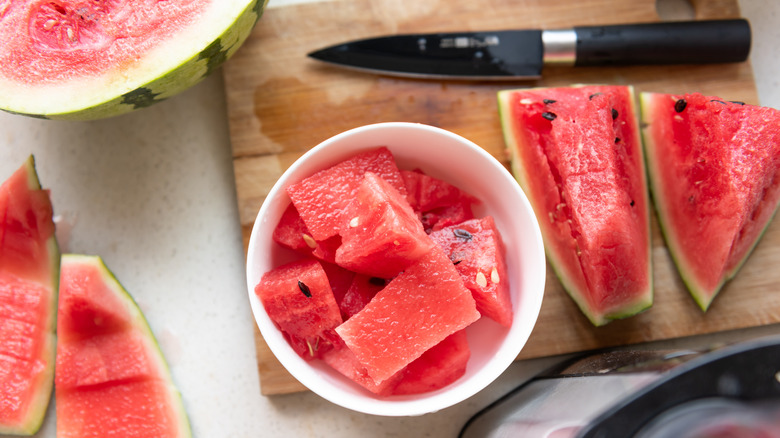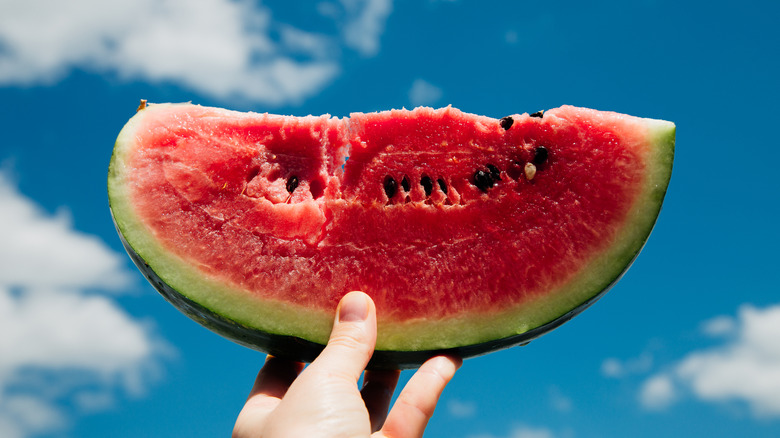How To Pick A Perfectly Ripe Watermelon At The Grocery Store
You may have a lot of burning watermelon questions that you need answers to. One of the most popular ones, and we think most important, is whether or not the watermelon you're picking up at the store is ripe. To get to the bottom of a juicy and sweet answer, Food Republic spoke to Marissa Stevens, recipe developer and food blogger at Pinch and Swirl.
According to Stevens, there are a few different ways that you can check a watermelon in the store to ensure you won't be disappointed once you crack it open. The most important thing to check is the field spot, which is the large, discolored spot on the surface of a watermelon that indicates what part of it sat on the ground as it matured. "A creamy yellow field spot ... is one of the best indicators of ripeness," Stevens said. "If it's pale or white, the watermelon likely isn't ready. A deep yellow spot means the melon had time to ripen on the vine."
In addition to checking the field spot, Stevens also suggested assessing the watermelon's skin in general. "You also want a dull skin — not shiny — and a firm, symmetrical shape that feels heavy for its size." While some people use a method called the knock test to check for ripeness, where you knock and listen for a hollow sound, Stevens said it's not her favorite indicator, as there's plenty of room for error with it.
Tips on picking watermelons based on type
Since there are different types of watermelons out there — regular, seedless, and mini — we wanted to find out if there are different ripeness indicators to look for. According to Marissa Stevens, the same general principles apply overall for each — assessing the field spot, looking for dull skin, and examining heft — but she said that mini watermelons can be trickier because the cues are more subtle. "With minis, I also gently press both ends of the melon; if there's a little give (not softness), that can be a good sign," Stevens said. "For seedless watermelons, I avoid overly uniform shapes — slight irregularity often means better flavor."
Once you've brought your perfectly ripe work of art home, don't forget to store your sliced watermelon properly — aka minimizing its exposure to air — so that it stays fresh for as long as possible. And so that you don't have a ton of waste, consider reusing the watermelon rinds by grating them into a cake for a mildly sweet and totally refreshing summer dessert.


